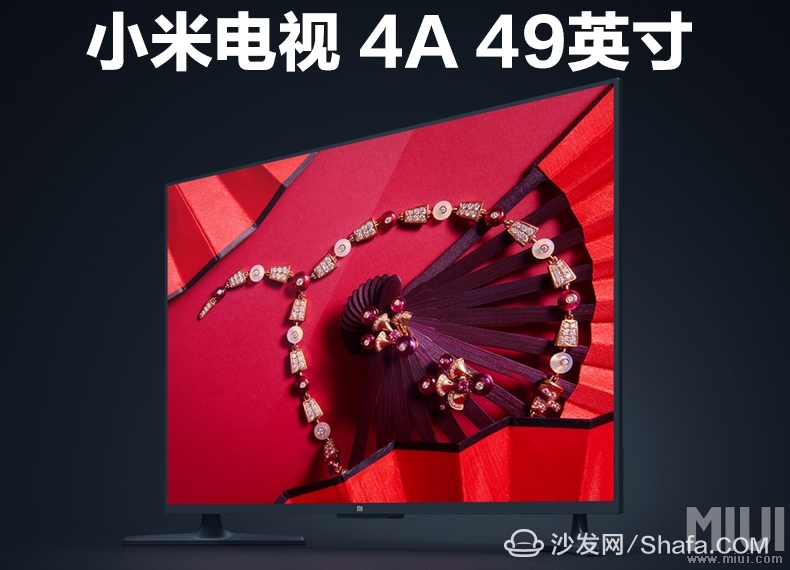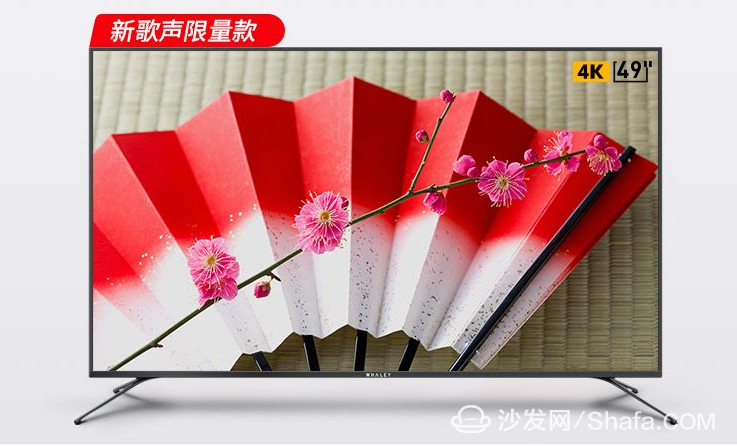Although both Xiaomi and Mijia, which rank among the top three internet TV brands, seem calm on the surface, they are actually in a state of flux. When consumers choose TVs, they often have to compare these two products. Recently, many small business owners asked me which one is better between 49-50 inch TVs, and which one is more worth buying. To answer this question, I selected the latest flagship models from both brands—the Xiaomi TV 4A 49-inch (Standard Edition) and the Mijia D series 49D—for a comprehensive comparison across six major aspects: design, picture quality, sound quality, hardware, system, and membership services. Here's how they stack up.
**Xiaomi TV 4A 49-Inch Standard Edition**

- **Features**: HDR, 2GB+8GB RAM, quad-core 64-bit processor, PatchWall operating system.
- **Price**: Around 2399 yuan.
**Mijia D Series 49D**

- **Features**: 4K HDR, 2GB+16GB storage, AI voice control, 10.9mm slim body, two-year membership included.
- **Price**: Around 2498 yuan.
**1) Design**
- **Xiaomi TV 4A 49-Inch**: Simple, plastic build.
- **Mijia D Series 49D**: 10.9mm slim body, metal frame [Winner].
Summary: For consumers, aesthetics are subjective. However, I would lean toward Mijia here. While Xiaomi opted for a more cost-effective plastic material, leaning toward traditional TV designs, Mijia used a metal frame, which adds a premium feel. It’s worth noting that the Xiaomi TV 4A has a known issue with its in-line plug-in interface, making wall mounting difficult. This could be a dealbreaker for some users.
**2) Picture Quality and Sound**
- **Xiaomi TV 4A 49-Inch**: LG/Samsung/Huaxing Opto panels, 1080P resolution, HDR10/HLG, 6th generation image processing engine, eye protection mode, Dolby+DTS dual decoding.
- **Mijia D Series 49D**: IPS hard screen, 4K resolution, HDR, eye protection mode, Dolby+DTS dual decoding [Winner].
Summary: The main difference lies in resolution. The Mijia D Series offers 4K resolution, surpassing the 1080P of the Xiaomi TV 4A. Both support HDR and eye protection modes. While the Xiaomi TV 4A uses panels from LG, Samsung, and Huaxing, each with minor differences in response time (6ms for LG, 8ms for Samsung, 6.5ms for Huaxing), the dynamic response of the Mijia is 6ms. Without professional equipment, it's hard to measure, but Mijia seems to hold an edge in panel parameters.
**3) Hardware Comparison**
| Feature | Xiaomi TV 4A 49-Inch | Mijia D Series 49D |
|------------------|----------------------|--------------------|
| CPU | Quad-core A53 | Quad-core A53 |
| Memory | 2GB + 8GB | 2GB + 16GB |
| Bluetooth | Bluetooth 4.1 | Bluetooth 4.2 |
| Interfaces | USB2.0, HDMI2.0b | USB3.0, HDMI2.0a |
Summary: Both models use a quad-core A53 CPU. Mijia has better storage capacity compared to Xiaomi. In terms of Bluetooth, Xiaomi outperforms Mijia slightly. Regarding interfaces, Mijia offers USB3.0 and HDMI2.0a, while Xiaomi provides USB2.0 and HDMI2.0b, which is less advanced. The standard remote control is a Bluetooth voice remote, far superior to an infrared one. Thus, Mijia wins this round quite convincingly.
**4) Operating System**
- **Xiaomi TV 4A 49-Inch**: PatchWall operating system, AI voice control [Winner].
- **Mijia D Series 49D**: AI voice control, panoramic VR.
Summary: In terms of the operating system, I favor Xiaomi. Its AI voice control has a broader range of recognition, including complex conditions, multi-round interactions, and star face recognition. Although Mijia offers panoramic VR, it lacks practicality in most scenarios.
**5) Film and Television Resources**
- **Xiaomi TV 4A 49-Inch**: iQIYI, Tencent Video, Sohu Video, Mango TV, PPTV JuLi Sports.
- **Mijia D Series 49D**: Chinese Culture, Tencent Video, Mango TV, TVB, BBC, HBO.
Summary: Both focus on film and television resources. Xiaomi leans heavily on domestic platforms, whereas Mijia includes niche international content. Depending on your preferences, either option might suit you better.
**6) Membership Services**
- **Xiaomi TV 4A 49-Inch**: 249 yuan/year, exclusive to iQIYI content.
- **Mijia D Series 49D**: 299 yuan/year, includes two years of membership [Winner].
Summary: For those seeking premium content, Mijia’s membership package is more cost-effective. Despite being slightly pricier than Xiaomi, Mijia offers a wider range of resources and includes two years of free membership with the purchase of the TV, adding significant value.
In conclusion, Mijia and Xiaomi are two of the leading internet TV brands, fiercely competing in the 49-inch TV market. Overall, the Mijia D Series 49D outperforms the Xiaomi TV 4A 49-inch in terms of overall configuration. This comparison aims to provide readers with a clearer understanding of the two products.
For more smart TV and box information, visit Smart TV Information Network Sofa Butler (http://), China’s influential website for TV boxes and smart TVs, offering news, communication, and resources related to smart TVs and software.
---
*Note: This review reflects the author's personal opinion based on current product specifications and market trends. Prices and features may vary depending on availability and promotions.*
The EI 41 Transformer is a specific transformer model,
Key Features
EI-type Core: Known for their good heat dissipation and reduced electromagnetic interference (EMI).
Potential Power Range: Although specific power ratings vary, EI transformers are commonly used in medium-power applications. The EI 41 model might be suitable for power ranges from several tens to hundreds of watts, depending on the design and intended application.
Efficiency and Losses: Modern EI transformers aim for high efficiency and low losses, employing advanced materials and design techniques to minimize energy waste.
Customization: Depending on the manufacturer, the EI 41 Transformer may offer customization options such as different voltage ratios, insulation classes, and mounting configurations.
Applications
Electronics: As a power conversion or isolation component in a wide range of electronic devices.
Audio: In audio amplifiers, loudspeakers, and other audio equipment, where stable power and signal isolation are crucial for optimal sound quality.
Industrial Automation: In control systems and power distribution networks within industrial environments.
Lighting: In LED, fluorescent, and other types of lighting systems, converting line voltage to suitable levels for the lamps.
Ei 41 Transformer,Ei41 Line Transformer,B11416 Transformer,Ei Type Transformer,transformer manufacturers
Guang Er Zhong(Zhaoqing)Electronics Co., Ltd , https://www.geztransformer.com